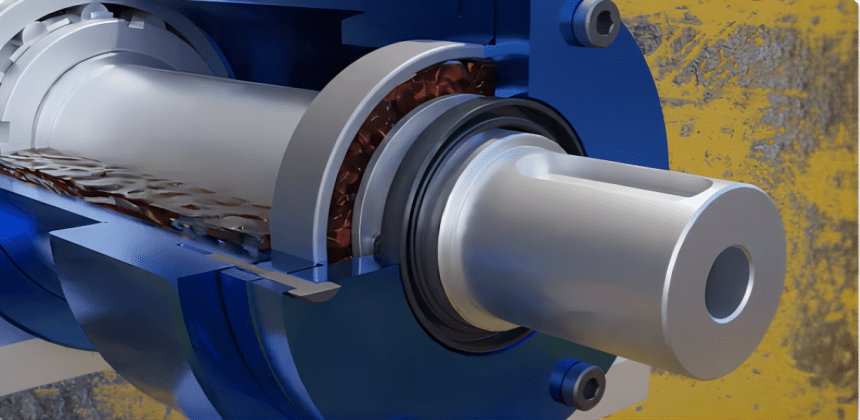What Is Viscosity?
When selecting a pump for a particular application, it is important to know if the product to be pumped has a higher viscosity than water, and the viscosity of the fluid is one of them. Fluid viscosity is defined as the property that provides resistance to flow due to internal friction within a liquid.
Understanding Viscosity
What is viscosity?
Viscosity is a physical property that describes the internal resistance or stickiness of a fluid (liquid or gas). It measures the degree to which a fluid resists flow. In pumps, viscosity refers to the viscous or flowing nature of the fluid and is important to pump operation and performance. Fluids with high viscosity are more difficult to flow than those with low viscosity.
The value of viscosity is affected by temperature and pressure, and different types of fluids (e.g., water, oil, air) have different viscosities. For example, water has a relatively low viscosity at room temperature, while certain oils have a high viscosity. Viscosity is an important parameter in fluid engineering, chemical engineering, fluid mechanics, and many other fields because it affects the behavior of fluids as they flow and are transported through piping, plumbing, and mechanical systems.
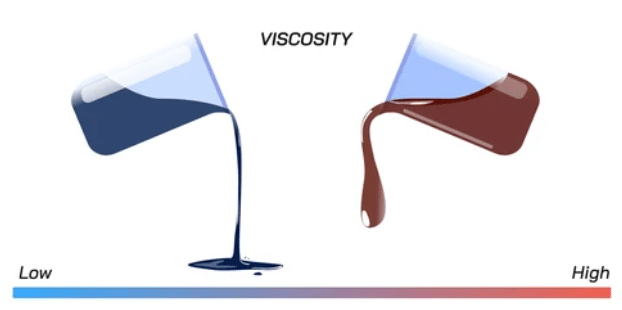
Understanding Viscosity Terminology
- Newtonian fluids: Fluids that decrease in viscosity as the temperature increases are known as Newtonian fluids – for example, motor oils. 2.
- shear thinning or thixotropic: when energy is applied, the liquid exhibits a decrease in viscosity called shear thinning or thixotropy – an example is paint.
- shear thickening or swelling: when energy is applied, the liquid exhibits an increase in viscosity, called shear thickening or swelling. Candy compounds are an example.
How to test viscosity?
Tests are run through a range of shear rates and temperatures and the viscosity results are plotted on a graph. A given flow rate through a specific size pump determines the shear rate for that linear velocity, and as you know with temperature and shear rate, it will define the viscosity under those conditions.
Viscosity in Pumps
- Pump selection: Viscosity is one of the key factors in selecting the appropriate type of pump. Different types of pumps are suitable for liquids of different viscosities.
- Pump design and size: The viscosity of the liquid affects the design and size of the pump. Higher viscosity liquids require more powerful pumps to overcome resistance to flow.
- Performance evaluation: Pump head, flow rate, and efficiency typically vary with viscosity.
- Temperature effects: Viscosity typically decreases as temperature increases.
- Shear thinning and Shear Thickening: Some liquids, especially non-Newtonian liquids, may shear thin or shear thicken when subjected to shear forces.
- lubrication: in the bearing and sealing parts of the pump, the viscosity of the lubricating fluid is critical to minimizing friction, preventing leakage, and protecting pump components.
Liquid Viscosity and Pump Ratio Typical Liquid Viscosity
| Liquid Type | Typical Viscosity (in Pa-s) |
| Water | 0.001 |
| Automotive Oil | 0.05 – 0.1 |
| Gasoline | 0.001 – 0.003 |
| Alcohol | 0.001 – 0.003 |
| Milk | 0.003 – 0.005 |
| High-Viscosity Syrup | 2 – 10 |
| High-Viscosity Fats And Oils | 10 – 1000 |
| Liquefied Natural Gas | 0.00015 – 0.00045 |
| Crude Oil | 0.002 – 0.1 |
| Sewage | 0.001 – 0.01 |
How to choose the right viscosity for the pump?
Centrifugal pump
For low to medium viscosity liquids such as water, gasoline, alcohols, etc. They are best adapted for low viscosity liquids because they are designed on the principle of fast rotation and high flow rates.
Highly viscous liquids may cause centrifugal pumps to degrade in performance because the liquid is difficult to flow within the pump, which may require more power to propel the fluid.In general, centrifugal pumps are the best choice when dealing with viscous fluids. They typically operate at lower speeds than centrifugal pumps and impart a small amount of shear energy to the fluid. A wide range of positive displacement pumps are available depending on the application requirements.
Progressive cavity pump
They are suitable for medium to high viscosity liquids such as high viscosity syrups, high viscosity oils and fats. Their screw configuration allows handling of high viscosity liquids and also performs well when the liquid contains solid particles. Due to the special construction of their internal screws, progressive cavity pump have a high pumping efficiency in high viscosity liquids. Eccentric screw pumps are internal mesh, closed positive displacement pumps that can be used in virtually all industrial applications for pumping low viscosity to viscous media due to the pump’s adaptability to the medium, smooth flow, and good suction performance.
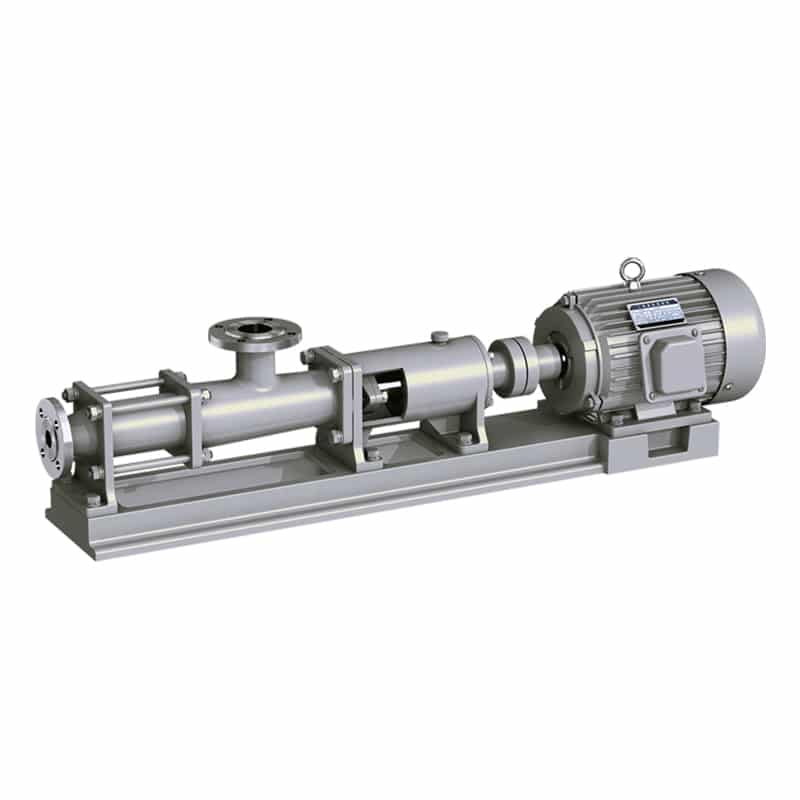
Diaphragm pump
Diaphragm pumps are suitable for medium viscosity liquids such as chemicals, paints, and sewage. They use diaphragms to separate liquids and push them through compressed air or liquid. Diaphragm pumps are usually tolerant of the viscosity of the liquid, but may require more pressure when handling highly viscous liquids.
Air-operated diaphragm pumps are capable of varying flow outlet and discharge pressures, enhancing performance through the use of air filters/regulators and pulsation dampeners, and have metal or plastic fluid sections and housings that can handle any fluid, including corrosive and abrasive fluids, but are unable to handle highly viscous fluids. AOBL 1/2″ Classic Double Diaphragm Pump delivers powerful performance in a small package.
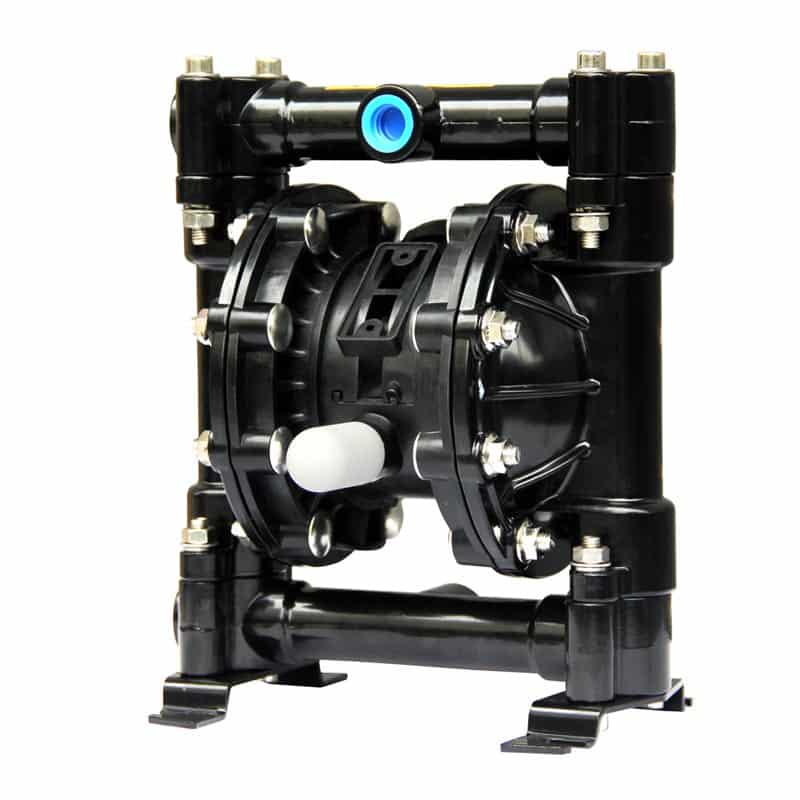
gear pump
Gear pumps are suitable for medium to high viscosity liquids such as high viscosity greases, polymers, molasses, etc.. They convey liquids from one port to another through two or more intermeshing gears. Gear pumps have better resistance to high viscosity liquids because the gears are able to push the liquid through the space between the gears.
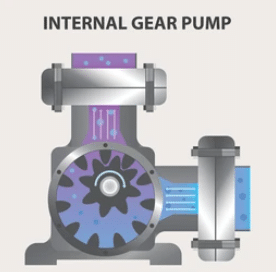
Different types of pumps have different ranges of application and performance characteristics, and the selection of the right type of pump should take into account the viscosity range of the liquid as well as other operating conditions. In the case of high viscosity liquids, screw and gear pumps are usually a better choice, while in the case of low viscosity liquids, centrifugal pumps may be more appropriate. Diaphragm and vortex pumps are often used to handle specialized application needs such as chemical transfer and wastewater treatment.
How to maintain a pump that transports viscous liquids?
- Periodic inspection: Inspect the pump and related components, including piping, valves, and fittings, at regular intervals.
- Cleaning and maintenance: Periodically clean the pump and piping to prevent buildup from clogging or impairing pump performance. Remove any deposits or particles that may have developed in viscous liquids.
- Replace seals: Pump sealing components such as rings or packings.
- Maintain lubrication: For pump parts that require lubrication, ensure that proper lubrication is provided to minimize wear and friction.
- Replace consumables regularly: Pump systems typically include consumables such as seal rings, bushings, and bearings.
- Maintain the drive: If the pump has a drive, such as a motor, reducer, or pump coupling, inspect and maintain these components regularly.
- Monitor vibration and temperature: Use vibration monitoring devices and temperature sensors to monitor pump vibration and temperature.
Maintaining pumps for highly viscous liquids may require more frequent inspection and maintenance because highly viscous liquids are more abrasive to the pump. Regular preventive maintenance is essential to ensure the long-term stable operation of your pump system.
Summary
When selecting a pump for a specific application, it is important to know if the product to be pumped has a higher viscosity than water.
AOBL as a specialist in fluid pumps, we offer sanitary diaphragm pump, double diaphragm pump, filter press feed pump, magnetic drvie pump, contact our professional and technical team for your solution.

